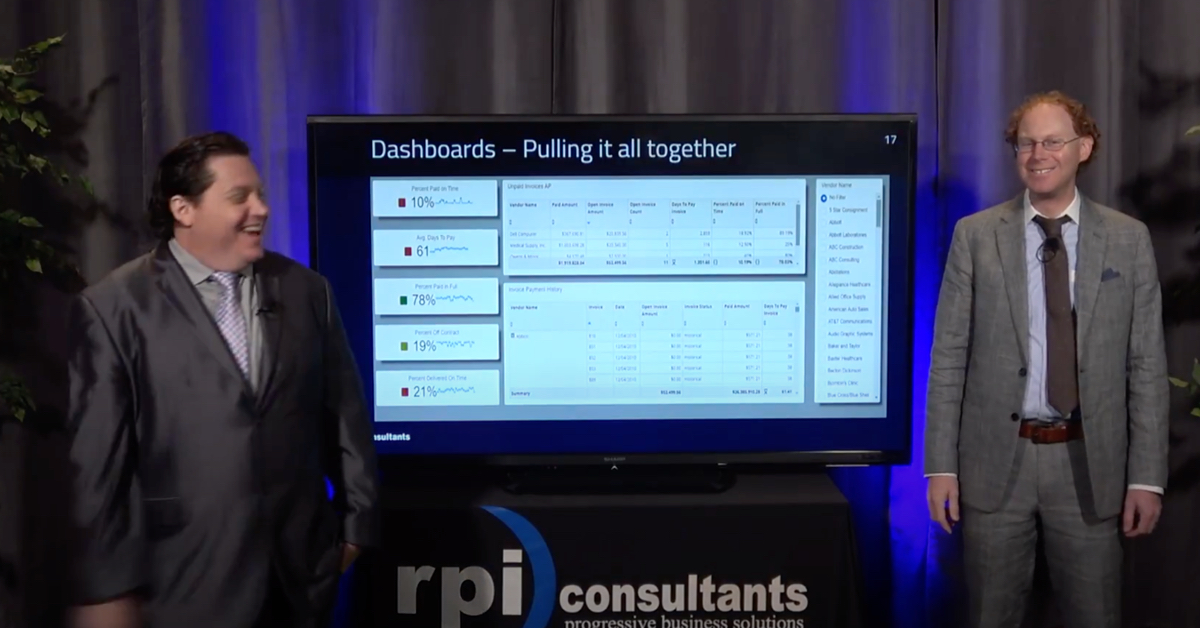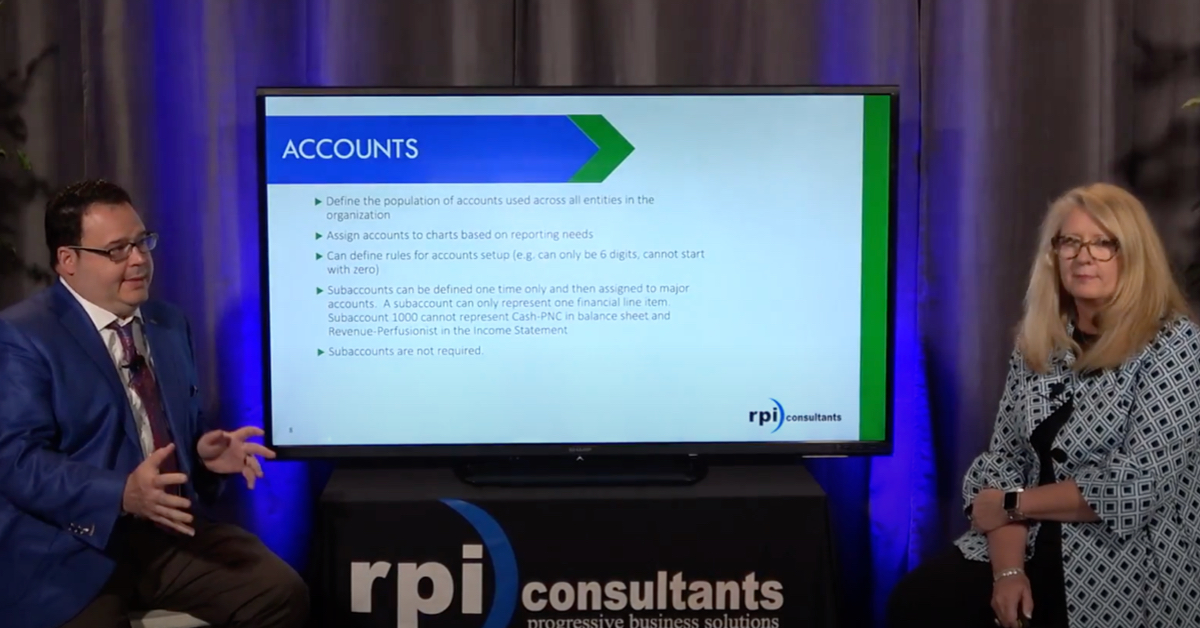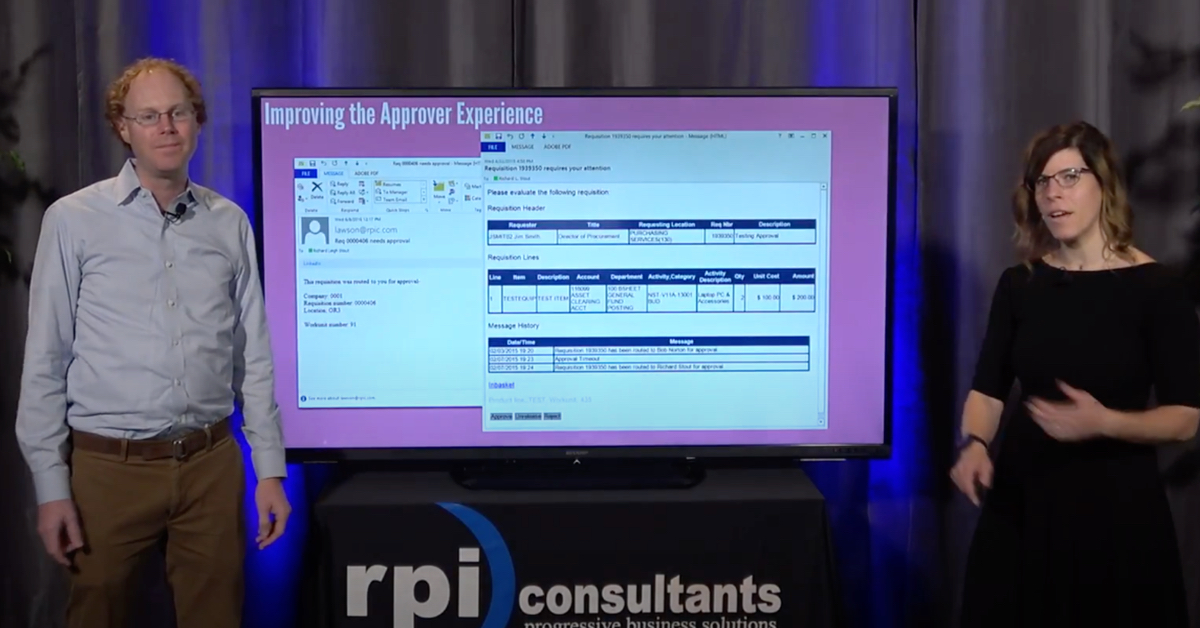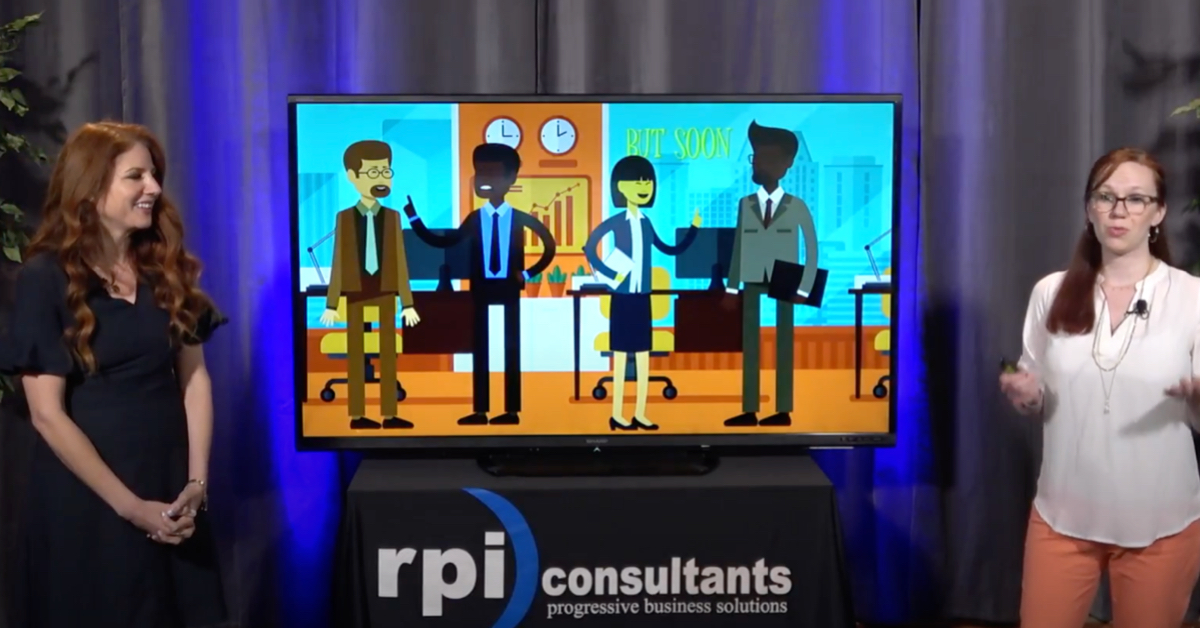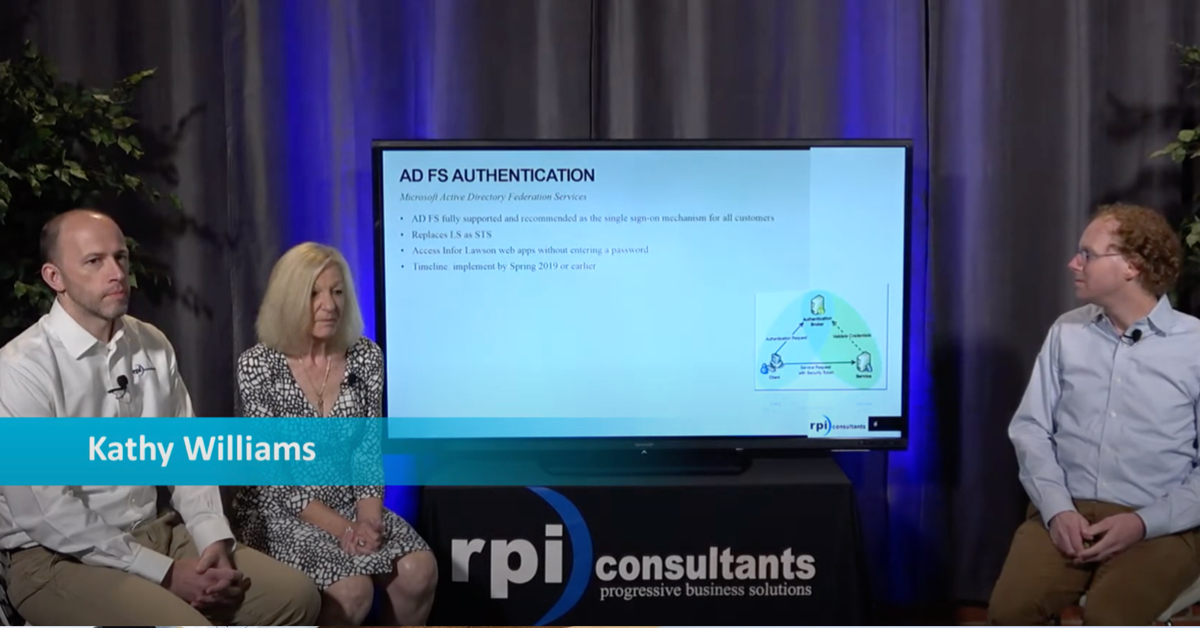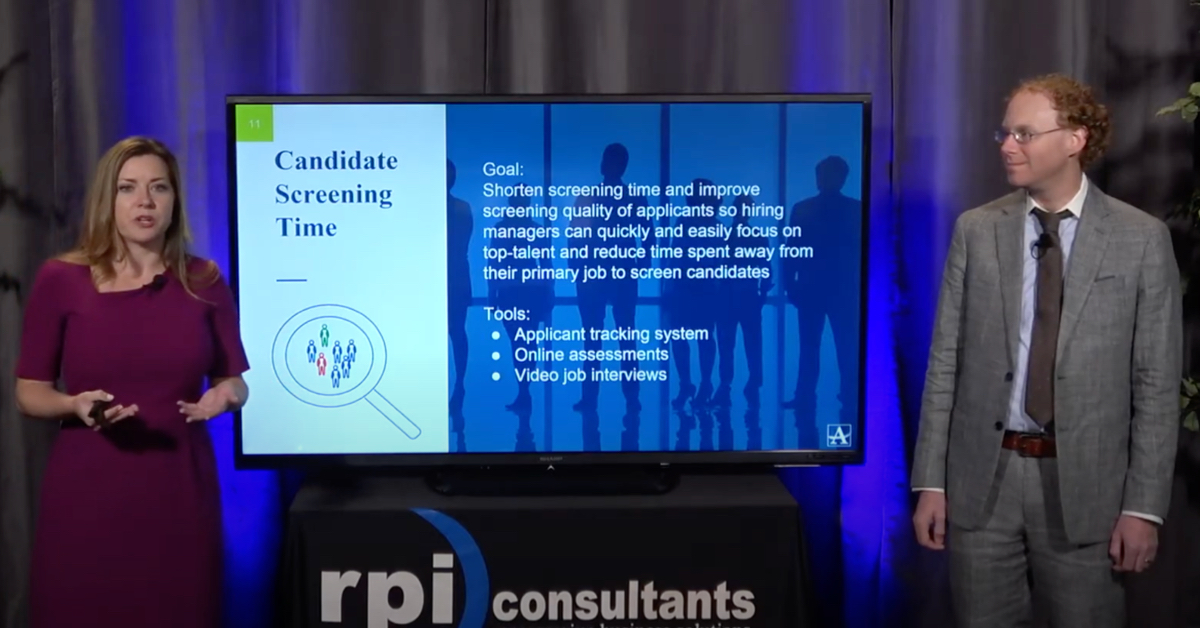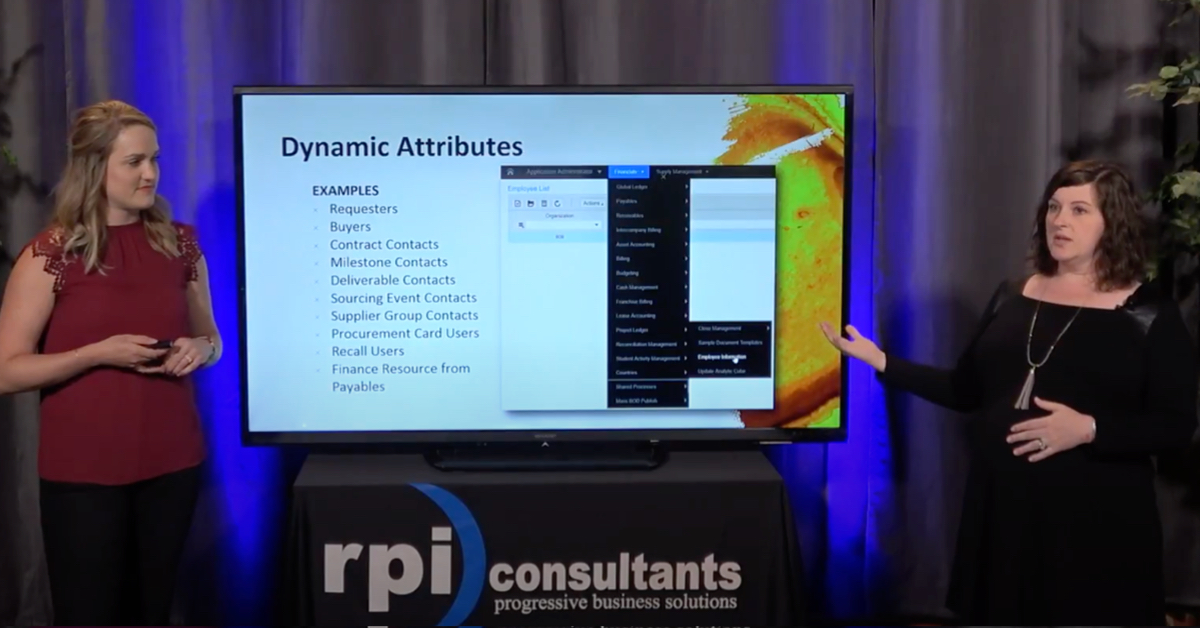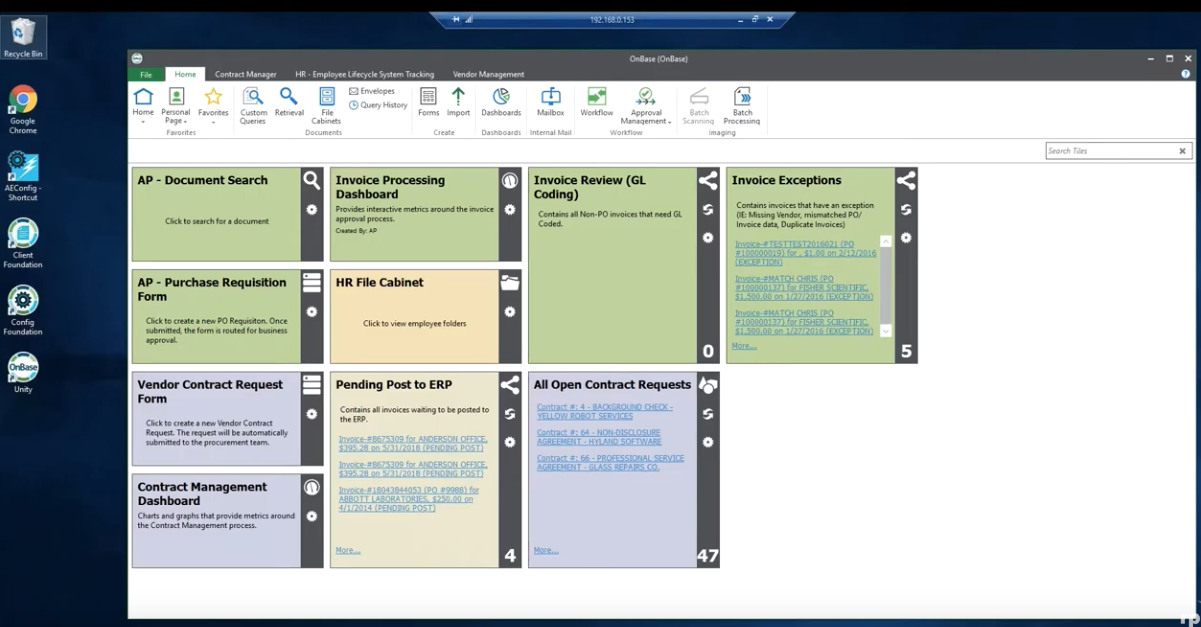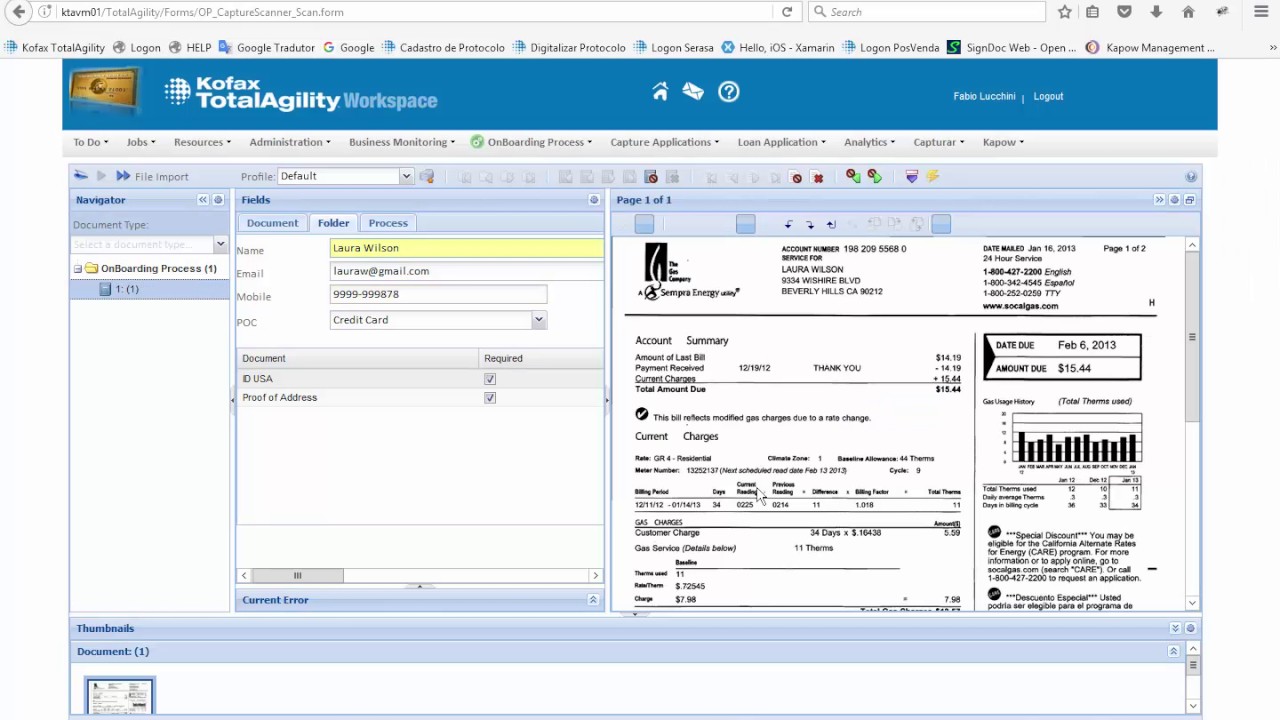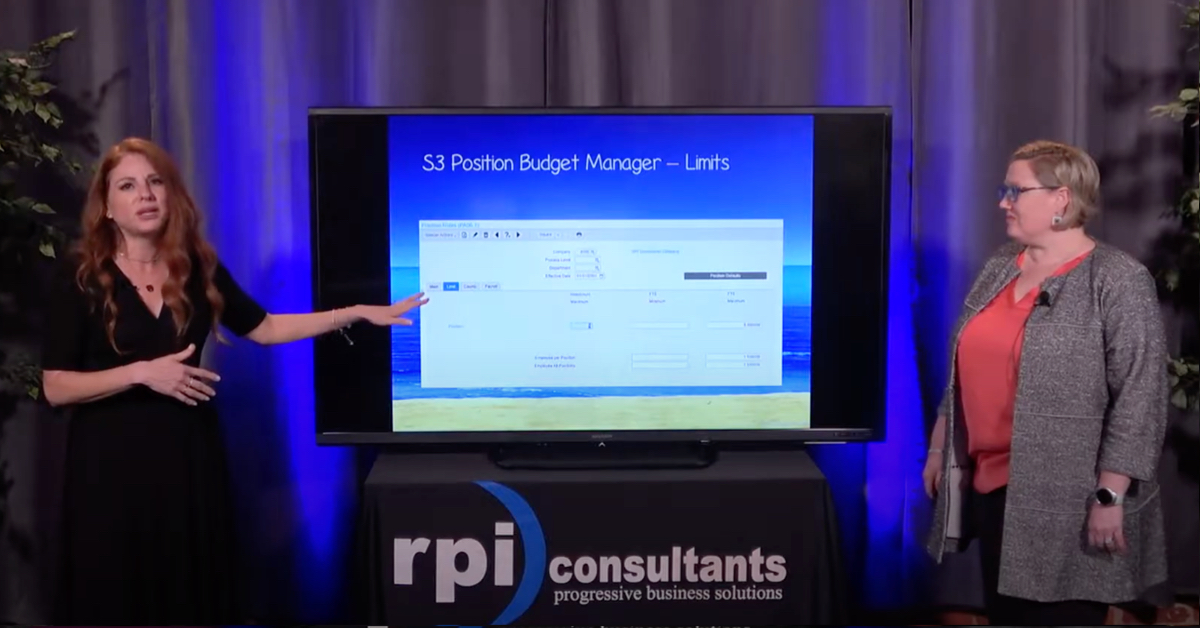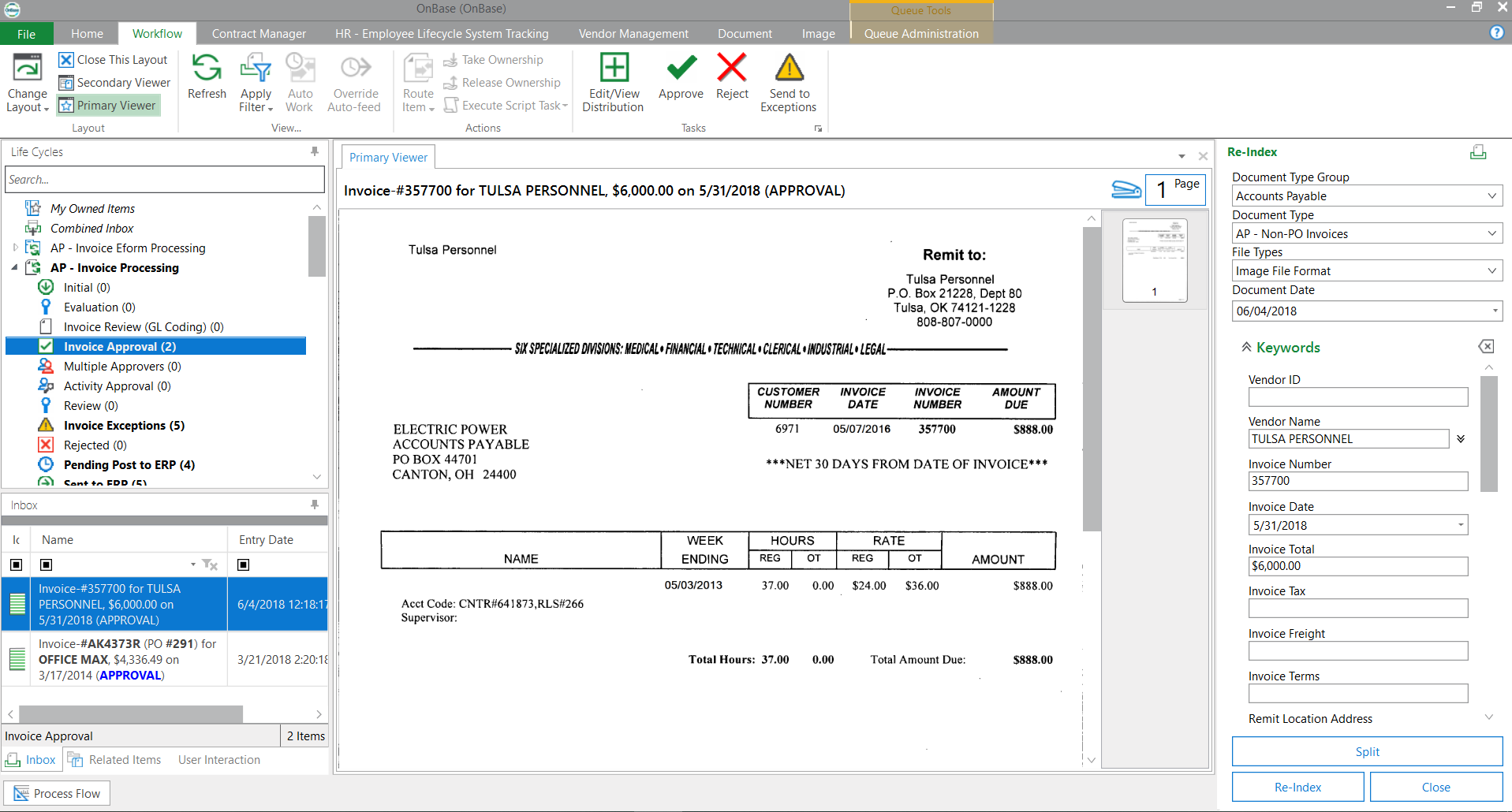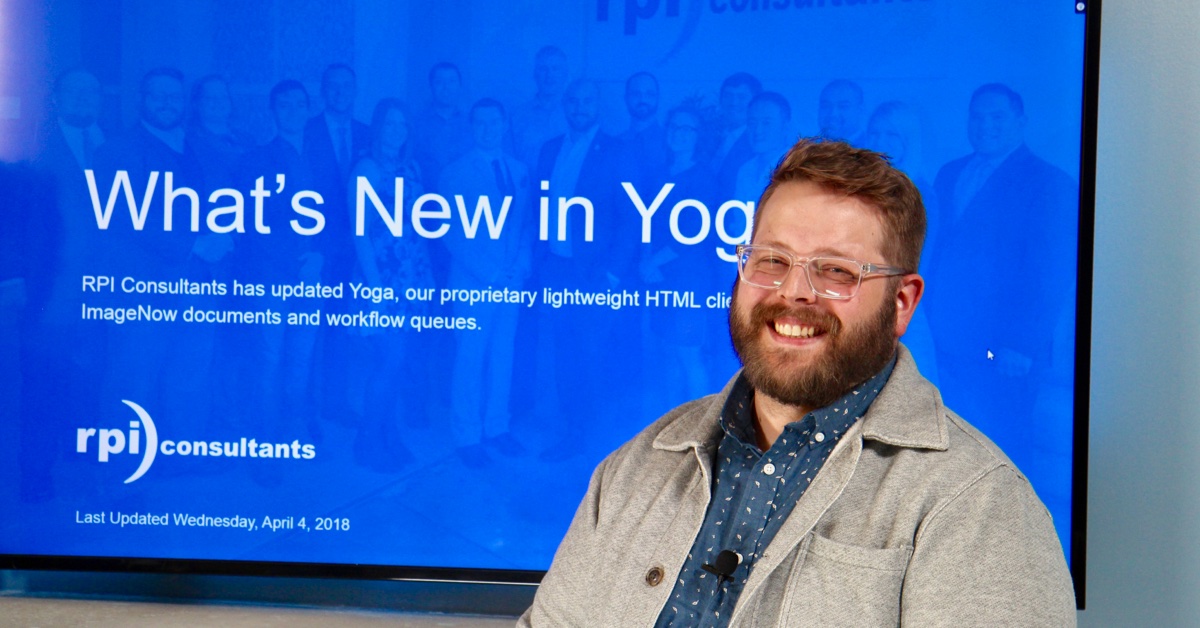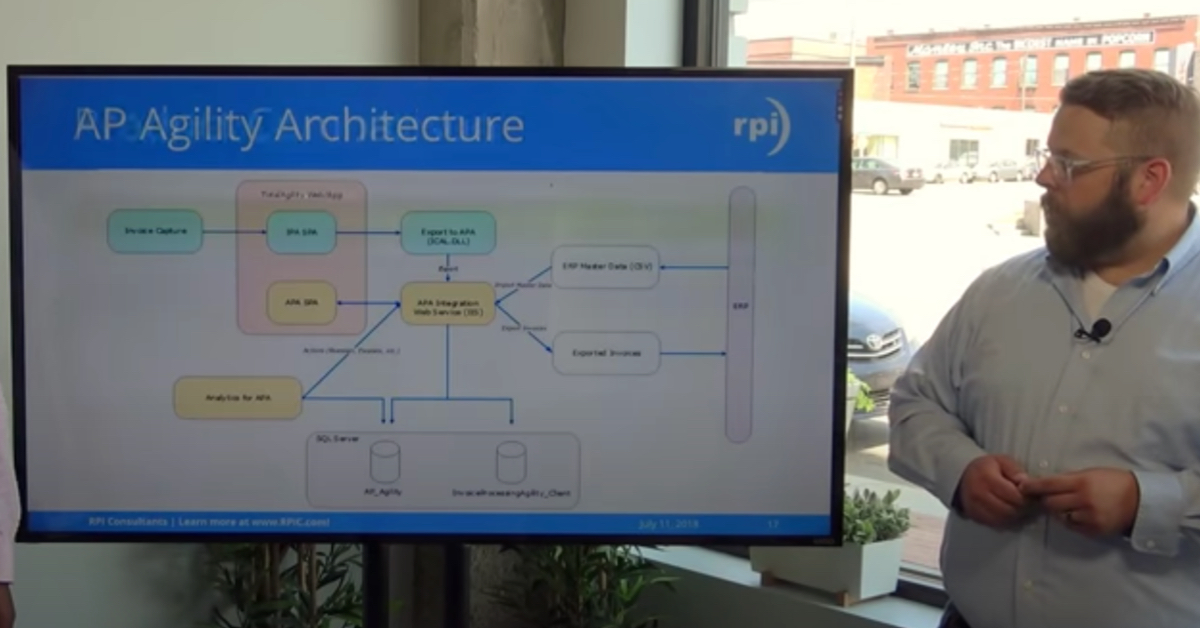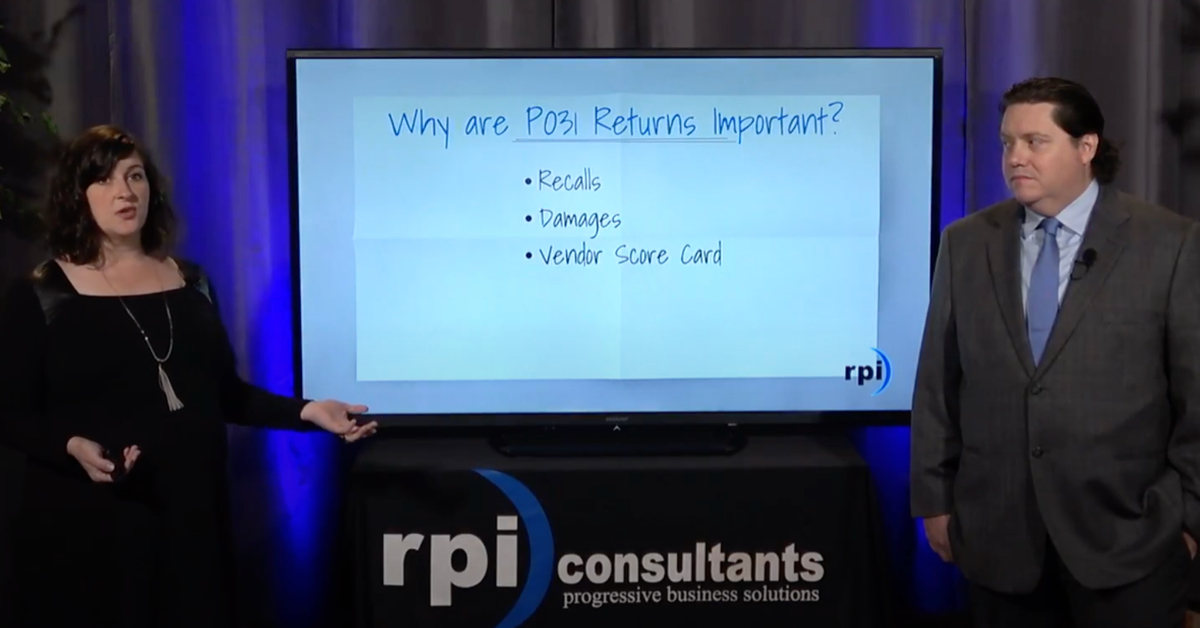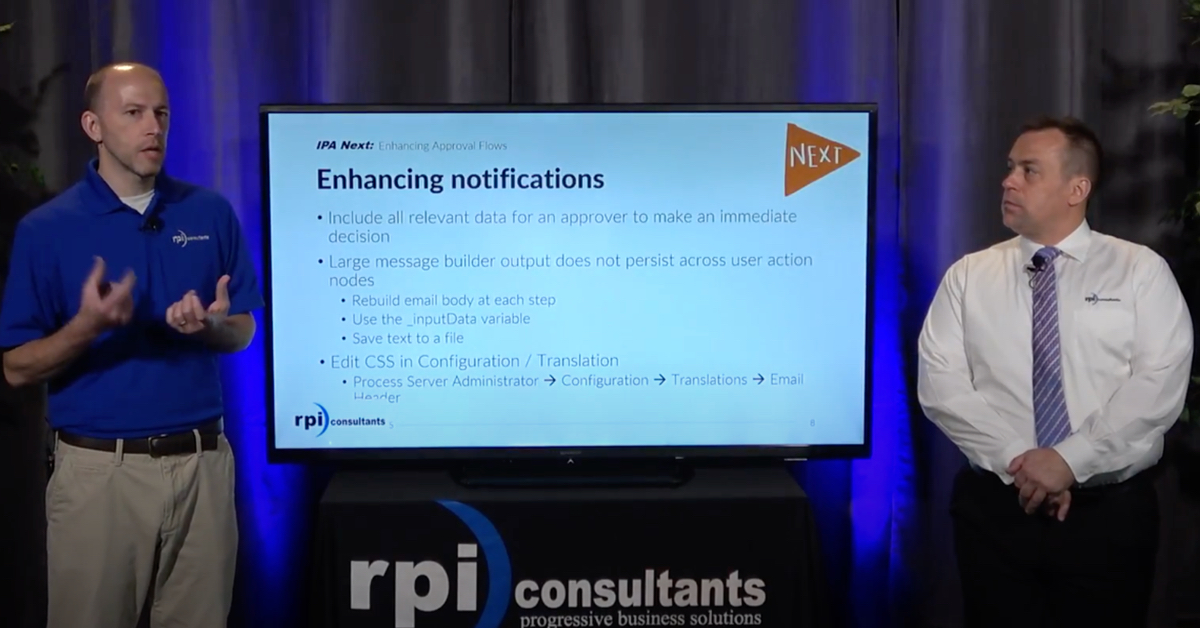Alex Lindsey:
Welcome to another webinar Wednesday with RPI Consultants. Today we are going to be talking about back office solutions for healthcare organizations. There are a lot of solutions out there and a lot of back end processes if you were a healthcare system or hospital, and we have a lot of options for you to deploy some solutions for automation then. Before we get started, we have a few housekeeping items. First and foremost, if you have any questions during this presentation, we have a moderator standing by and please put those questions in the channel there, the go to chat or whatever it is. I think there is a question and answer area. Second off, this presentation will be sent out to all attendees. This video itself will be posted to YouTube as well if you’d like to watch it at a later date or send to other folks. And additionally, if you have any ideas for future webinars or any topics that you’d like to cover or have questions about, please reach out to us and we’d be happy to oblige.
All right. As part of Webinar Wednesday, we have a few others coming up. We have one later today about packing slips, automating packing slips and Kofax TotalAgility. That’s one I’ll be giving. We’ll touch on that a little bit today, too, in our presentation. And in March we have the latest and greatest in Brainware 5.9 and 10 web services, which is great. How do you automate document indexing with bar codes that will be approximately a month now.
And to meet our presenters today, I would like to introduce Ben Nichols. He’s a senior consultant. He has over four years’ experience designing and implementing ECM and ERP solutions. He is a guru when it comes to Infor, in particular, the APIA suite, which is great for coding and approval within Lawson Infor. He is a certified Lawson CloudSuite financial person as well. And he is also one of the sharpest stressors in the office.
Ben Nichols:
So additionally we’ve got Alex and Alex has got six years’ experience, our Alex Lindsey. Experience designing, implementing, and supporting ECM and advanced capture solutions. Additionally Alex specializes in accounts payable and has a background and focus in OCR and additional custom solutions. So, regardless of what your organization’s unique business processes are, Alex is your guy. So some fun facts about Alex, he’s a master whiskey distiller. He is a novice ax thrower and a nerdy dad.
Alex Lindsey:
That is also very true. Thank you, Ben.
Ben Nichols:
So a little bit about our agenda today. We’re going to be covering what RPI Consultants is, what we’re about, who we are. We’ll talk a little bit about product and technology overview. We’ll review content and process automation solutions, talk a little bit about the system integrations and then wrap up with your questions and summary.
Alex Lindsey:
So to start off a little bit about RPI Consultants, if you’re not familiar with us or you haven’t heard this spiel a million times, but we are a software services firm. We have over 80 full time consultants, project managers, the smartest of the smartest. Me being one of the lesser of them, but we have offices located in Baltimore, Tampa and Kansas City where we’re broadcasting from today and our services range from upgrades to new designs, implementations, just a little bit of script work or even just managed services if you’re feeling overwhelmed with your product suite. And speaking of product suites, we offer, we work with basically all of these technologies and more, Perceptive, OnBase, Brainware, Kofax, Infor. Basically we are licensed re-sellers, have all of these products as well. And that’s a nice transition for us to get into the actual product and technology overview.
So if you are a healthcare organization and maybe you have a certain suite of software, things particularly like EMR, but maybe you’re looking to expand or you’re looking to explore other opportunities or expand the opportunities or solutions you have with these product suites, this is where we’re going to really touch on that.
So first and foremost, you have your enterprise content management systems. This is essentially how you are storing your documents. If you are a healthcare organization, this should be maybe the ground point for you to essentially say, what am I doing with my documents, particularly in my back end solutions. So, your accounts payable, your patient billing, your remittances, things like that. These ECM’s, we work with Perceptive Content and OnBase quite a bit and both of these ECM’s are great. They have a way to capture documents, whether through scanning or email or EDI or things like that. There’s a number of different ways to do it. And the big thing that you do within an ECM like this is index the documents with associated metadata. That allows you to find these documents and retrieve them through many different interfaces in a quick and easy way.
These also have a lot of workflow engines built within them as well that allow you to customize a workflow to your back end processes. Along with these, there’s really some audit worthy things to know here. The record retention management. So how long do you keep an invoice document? Both of these suites offer really good details around how to get rid of those if you need to, as well as reporting engines.
Now, the other piece, and we’ll talk about this as well as just the advanced data capture. If you’d like to enhance your solutions even more if you have a heavy volume of certain documents in introducing something like advanced data capture with Kofax TotalAgility, KTM or Brainware by Hyland as well. This allows you, both of these engines allow you to extract data off of any document type really, classify that document in some certain way to say this is an invoice, this is this, this is this, pull the data you need to and actually bounce it off of your host system. So either your accounting system or your HRIS system or your medical records system even to get pertinent data and validate that. So it really is a good way for you to automate processes and take your user’s hands off of the button essentially where manual mistakes can often happen.
Ben Nichols:
So true. So now we’re going to chat a little bit about the ERP. So this is enterprise resource planning and with inside of the context of our deck today we’re talking specifically about Infor Lawson as an ERP. And so Infor Lawson brings together a lot of different aspects of the organization and functions within most organizations. So that includes finance, HR, supply chain, and HCM. Under finance, we have those subcategories of AP and payroll and sometimes there’s some additional aspects. But really with an ERP, what you’re doing with the ERP, is it’s your primary system of record and it really interconnects all of that data across the organization regardless of what that function is. So connecting finance data, HR data, supply chain data altogether. So next up, we’ve got our EMR’s which are electronic medical records and this handles patient medical records, charts and other specific patient related data. So this is medical ordering, so this is specific medical supply management, so we have supply chain management in ERP and then we have supply chain kind of management for medical related items. And then there’s patient billing and remittance. So with that we actually have solutions like Epic, Cerner, Mckesson, and Meditech, so these are providers of these types of solutions and they specialize with inside of the EMR.
Alex Lindsey:
So that should give you an idea of the software suites that are out there. So if you are a healthcare organization or a hospital or health system, those are the common softwares that are available. They’re the most popular I would say, and they give you a lot of options to do a lot of different things within your organization. So we’ll really hop into the first of those.
Ben Nichols:
We’re going to start with accounts payable. So with accounts payable, we’re going to do and look at this from a good, better and best stand point. And we’ve got four categories here of ECM, ERP, OCR and EMR. So if we start here in our good category, we’re going to start off with digital and physical invoice capture and archive. So you’re using an ECM solution to scan a document, put it into a workflow and maybe do a little bit of routing and some processes with inside of the ECM. We go to our next level of good, we’ve got index link and key. So this actually integrates the ERP. We scan the data into the ECM. We then go scrape or collect some of the data from the ERP and port it into ECM. And so you have some improvement there and you’re still in the good category.
Now moving onto better, we’ll start looking at digital invoice approval workflow, so you have defined and created a structure with inside of the ECM or with inside of the ERP to handle the routing of those invoices for approval. We have invoice coding with an eForm, so we structure collect that data, validate it, and ensure it’s the right format before it passes to the ERP. And then we have ERP accounting system integration. So this is where we do a little bit more heavy integration with ERP, passing that data both to and from the ERP system into the ECM.
And from there we moved to our best category. So this is integration of the multiple different aspects, so ECM, ERP and OCR. So that’s where we have advanced data capture. And advanced data capture is that OCR piece that collects the data off of the invoice and then helps populate the fields so we begin to automate more and more the collection of that data, be able to validate it and get it into the system a little bit more efficiently. Last but not least, we do advance check capture, and so at that point you’ve got all the pieces that come together for accounts payable all in one centralized location with all the data, including the invoice, payment information and the history of the lifecycle of that invoice.
Alex Lindsey:
The next piece that could really benefit a health care organization is just automating at some point or introducing software for your supply chain management team. So similar to what Ben said about the invoice processing and things like that, if you’ve got packing slip documents for instance, you can basically scan or capture those into an ECM and index those documents with keywords and data. Along with that, you know, that could include just actual physical packing slips themselves, the digital contracts if you’re getting other kinds of orders, things like that that you can store within the ECM. That’s just a good solution right there just to store your documents.
A better solution is to introduce within the ECM and the ERP’s contract version control and digital signatures. So, if you have a small approval process or maybe if you just need the recipient of a good to just say yes, I’ve received this, then you can introduce that as well. You could also introduce within that if you need any kind of approval workflow within that, you can build that within one of those ECM’s.
The best solution, and we’ll talk about this later on today, would be to introduce some OCR into this basically solution where you scan in packing slips. It goes through an approval process within the ECM. It goes through advanced data capture where you can actually pull details off of the packing slip itself and bounce that against your ERP system and really make that end-to-end connection similar invoice processing to get your packing slip processing done and really reduced the amount of touches your users have to do with that.
Ben Nichols:
Alright, so next up we’re going to talk about patient financial services or PFS. So we’re going to start again with our good column. So that starts off with the physical and digital employee records being captured and archived in an ECM, so it kind of like what we’ve talked about so far, getting a piece of data, putting it into an ECM and collecting and maybe doing a little bit of workflow with it. Next up we have index and link of patient data, so again we’re scanning it in, getting it in a workflow, but we additionally have some information in the ERP that we’re going to the ERP to collect and passing back to the ECM.
Moving to our better category, we’re looking at generating EOV images from EDI and then we’re integrating with the ERP to pass that data to and from the ECM and the ERP. Again, with EOB processing and building workflow for the next level of our better category, we’re adding some additional workflow and processes that help automate that between the ECM and the ERP. At that point we are also introducing the integration with an EMR system, so that’s passed between three systems now to and from and between them.
Last but not least, we’re tacking on the advanced data capture, so that’s that OCR piece that’s going to help us automatically pull that data. And then kind of a holistic solution that integrates all four aspects of the ECM, the ERP, OCR and EMR is that automatic payment posting for paper EOB’s. So we start with the document in ECM, collect and pass information to the ERP, start off with the OCR in collecting some of that initial data and then make sure we communicate and integrate with the EMR.
Alex Lindsey:
And one of the final solutions and by no means the last of any healthcare organization because there’s a lot going on within your hospital or health system would be human resources. Some might argue that is the biggest resource you guys might have and doctors, physicians, and certifications and things like that. So there’s a lot of documents associated with running an HR department within a healthcare organization.
So starting off with the good category. Again, you have your ECM, let’s get these documents that you guys may have in file cabinets right now, or may just getting lost in the email and get them into your ECM system. From there, again, you can do document capture directly to there. You can link the documents and just store them and have them available for search and retrieval. One thing to note within these just simple or good solutions, it’s possible to integrate directly with your ERP by sending a link directly over to it. So if you have a human resources information system, whether that’s within Infor or you have something like Workday maybe that has an HR system, links to your ECM to OnBase a perceptive, for instance, so those direct documents can be embedded within those systems.
A better solution would be actually like employee routing and workflow, or foldering even. This allows you to basically create a customer or user folders. So of all your employees, you create one single folder within an ECM. And within that folder you have all the associated documents that they may or may not see. Within that, too, there are specific permissions. So you don’t want, maybe it is confidential information that only the user should see. You can control that through permissions as well. With that, you can also introduce just some basic form functionality as well within both OnBase and Perceptive software. You can introduce forms for onboarding and recruitment, bonus payout, approvals and things like that. It’s important to note, too, that we offer a product called Yoga Forms that allows you to submit forms. So this can be external facing or internal facing to allow you to fill forms out very easily and build yourself to be able to submit into directly into an ECM.
And the best solution again, would be to introduce advanced data capture. That would be for if you have electronic forms coming in, potentially if, let’s say you have medical transcripts that are coming in from different places or from an external system that you would like to have OCR, to extract the data, bounce it off another system and get that information to verify it and then get it into your ECM for approvals or workflow or anything like that. And these again can be directly integrated with your EMR as well. All these systems we can make talk to each other. A good example of this would also be just credentialing. Like I said, just getting those credentials in. It’s very document heavy. It’s constantly coming in. So getting it into your ECM is important and getting it integrated across your ERP and EMR is also very important.
So last but not least, we’ll talk a little bit about what these integrations really talk about. So Ben and I talked a lot about how you get your ECM to your ERP to your EMR, and then how does OCR a kind of work with all that? The first one and the one that we recommend a quite a bit is Yoga Connects. It’s a proprietary web service connection to an ERP. This allows these different systems, whether it’s a Perceptive, OnBase, Brainware, Kofax TotalAgility, Yoga Connect allows you to talk to these different systems to pull pertinent information, to query pertinent information as well to push that information into. So invoice processing, we would push the invoice data as opposed to manually doing it through an AP520 or MA40 if you’re using Infor Lawson.
Ben Nichols:
So next up we’ve got EDI, which is standardized format for invoice data, both PO non-PO, and it facilitates the file transfer of invoices and remittance information to your ERP. This is typically an automated process that, you know, structures that data passes it over, gets imported into the ERP.
Alex Lindsey:
And last but not least, web service. If there’s general API’s available that we can communicate with in your EMR or your ERP, basically if we can call those to get that information. Similar to Yoga connects, if you don’t use that, that’s totally fine. We could just do these, like for instance, if it’s SAP, we can do BAPI calls, standardized BAPI calls to talk to these systems. And if none of those work we can either do a flat file or just straight up sequel statement to query information and make those calls together.
So, in summary, there are a lot of different solutions that are available to healthcare organizations. We’ve covered a lot these. It by no means covers every solution that you could. The main point being with the software suites we were talking about earlier, you have the ability to roll out back office solutions to your entire health care organization.
Ben Nichols:
And so this presents really good opportunities to review your organization where some of these aspects with inside of the organization and where you guys can potentially integrate some of the things we’ve talked about today. So that’s where here at RPI, we’ve been doing a lot of health checks and assign a lot of assessments to review your organization, your processes throughout the multiple areas, whether it’s HR or AP, and kind of pull that together with some recommendations and how you can improve both today and also for future state. So what opportunities there are for improvements and integration.
Alex Lindsey:
So that about covers it. Thank you all for attending today. If you have any questions, now is the time to ask them. No questions, okay, great. It makes our job a little bit easier. We encourage you guys to please check out our knowledge base. We constantly try to update this with things that we found in working with different clients and different fixes or maybe just how to set up certain things. Again, I mentioned Yoga Forms. You can check out additional information about Yoga Connects and Yoga Forms at that link there, and if you’d like to watch past webinar recordings, please follow that link. Again, thank you guys very much.
Ben Nichols:
Thanks, guys.











